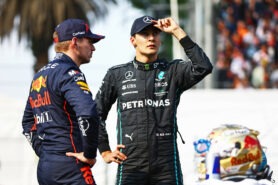Qualifying

Pole position qualifier Max Verstappen and second placed qualifier George Russell talk in parc ferme during qualifying ahead of the 2022 F1 Grand Prix of Mexico
Qualifying is an important component of a Formula 1 race weekend. It is the process by which drivers compete to set the fastest lap times and determine their starting positions on the grid for the race.
The Qualifying session is usually divided into three parts, Q1, Q2, and Q3. Q1 is the first session and features all the drivers on the grid, while Q2 is the second session and includes the 15 fastest drivers from Q1. Q3 is the final session, and it involves the top 10 drivers from Q2 competing for pole position.
The driver who sets the fastest lap time during Q3 starts the race in pole position, which is the starting position at the front of the grid. The starting positions for the rest of the drivers are determined by their respective lap times during the Qualifying session.
During Qualifying, drivers must choose the type of tyre they want to use for each session. The tyre compounds have different levels of grip and durability, so selecting the right tyres is crucial for setting fast lap times.
In the knockout format used in Q1 and Q2, the slowest drivers are eliminated at the end of each session until the fastest drivers remain. The time limit for each Qualifying session is usually around one hour.
After Qualifying, cars are placed in parc ferme, a secure area where no changes or modifications can be made until after the race. Any driver who breaks the rules or regulations during Qualifying may receive penalties, such as grid drops or time penalties.
Qualifying is a crucial part of a Formula 1 race weekend. It is an exciting and nerve-wracking experience for drivers and fans alike, and it sets the stage for the action-packed race that follows.











LAST 3 F1 Fan COMMENTS